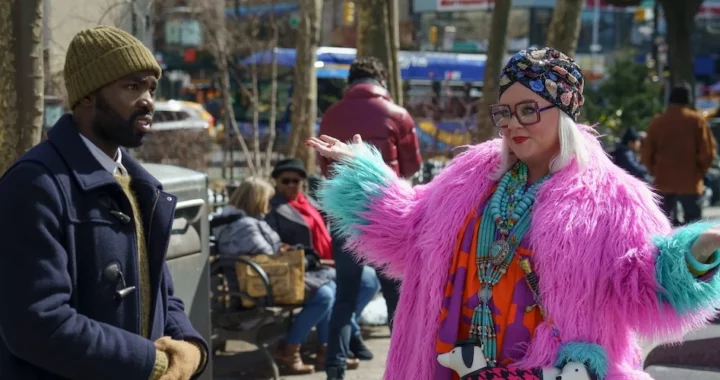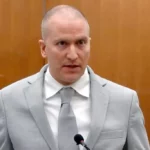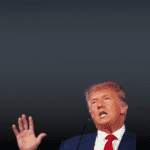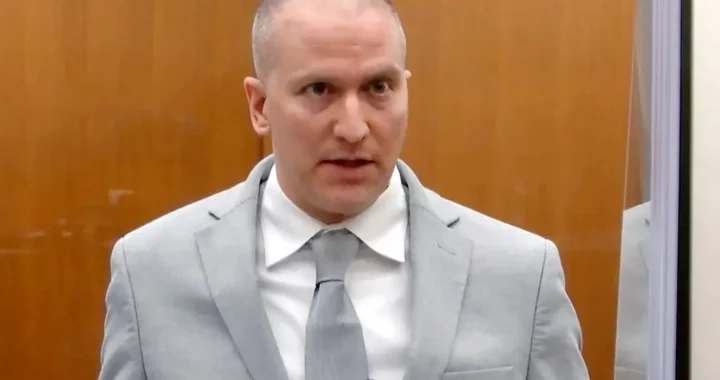Deadlocked: How America Shaped the Supreme Court, Review

Exploring the Complex Dynamics of the United States Supreme Court in “Deadlocked: How America Shaped the Supreme Court”
The United States Supreme Court derives its responsibilities primarily from the Constitution. The Founding Fathers, who conceived the intricate system of checks and balances among the executive (comprising the President and Cabinet agencies), the legislative (encompassing Congress and the Senate), and the judicial (represented by federal courts), established a complex framework akin to a rock-scissors-paper system of oversight. However, the highest court’s authority is only partially rooted in its constitutional role. Unlike the other branches, it is not subject to direct voter election and must await questions brought before it, operating solely in a responsive capacity. Alexander Hamilton famously characterized the judiciary as the least influential branch of government, remarking that it “exerts no control over the military or financial resources of society, nor can it take proactive actions. Its role can be described as one of judgment alone, lacking both force and will.”
So, what unfolds when the credibility of that judgment is brought into question? The Supreme Court’s authority relies heavily on the air of mystery that surrounds it. Housed within a “marble palace” nestled behind the Capitol building, it operates within what it might describe as a shroud of confidentiality, yet which the wider world might view as a lack of transparency. Oral arguments remain accessible to the public, albeit limited to those fortunate enough to secure seats within the Court chamber, as there are no C-SPAN cameras present. While the Court’s rulings have frequently sparked controversy, it is only in recent times that doubts have surfaced regarding its legitimacy. This skepticism has arisen due to the increasing politicization of the appointments process, along with revelations about conflicts of interest and departures from the most fundamental principles of jurisprudence.
This forms the focal point of Dawn Porter’s four-part series titled “Deadlocked: How America Influenced the Supreme Court.” The incisive subtitle clarifies that this narrative isn’t about how the Court molded the nation, a perspective that might have been adopted had this series been crafted in the 1970s.
Porter is also known as the director of “Trapped,” the exceptional documentary delving into the anti-abortion laws enacted in predominantly Republican states, poised to take effect if Roe v. Wade were overturned. Additionally, she’s behind the remarkable “Lady Bird Diaries,” which draws from the audio journal maintained by the First Lady.
This film bears a resemblance to Susan Saladoff’s “Hot Coffee,” a documentary that explored the extensive, decades-long endeavor to reshape state and federal courts to render more decisions favoring corporations and affluent individuals, while diminishing rulings in support of consumers, middle-class families, and those living below the poverty line. What became evident in that film was the concerted, well-funded campaign to influence the judiciary, spurred by a series of pivotal Supreme Court decisions encompassing school desegregation, the establishment of rights for criminal defendants, and the establishment of individual privacy rights within the “penumbras” (implications) of the Constitution, which subsequently led to landmark rulings supporting birth control, interracial marriage, and abortion rights.
“Deadlocked” offers a straightforward and balanced portrayal of the Supreme Court from that era up to the present day. Contemporary viewers might find it surprising to learn that during the Eisenhower era, the selection process for justices was simultaneously more and less political. It was more political because Eisenhower discreetly offered the Supreme Court seat to former California governor Earl Warren as a token of gratitude for his support during the election. It was less political in the sense that the notion of transforming a nominee’s confirmation hearings into a highly anticipated political showdown before the Senate Judiciary Committee had not yet emerged.
The series guides us through the appointment of each justice and highlights some of the most prominent decisions made during this period. Many of these decisions, such as the establishment of Miranda warnings for individuals under arrest and the affirmation of the right to marry someone of a different race, have become so deeply embedded in our culture that it is difficult to envision them being decided differently. However, there are other decisions that still stir controversy and debate to this day.
Until recently, progressives enjoyed a significant advantage. In essence, conservative justices were generally less inclined to overturn established legal precedents. As the series vividly illustrates, conservatives felt let down by justices such as David Souter and Sandra Day O’Connor, whose rulings were perceived as more liberal than anticipated. Determined to prevent a recurrence of this disappointment, the Federalist Society transformed from small, student-run groups on just a couple of law school campuses into a potent nationwide organization. This organization has exerted considerable influence in bolstering a new generation of lawyers who may not adhere to traditional conservative values—defined by a strict interpretation of the Constitution and a preference for limited government—but instead, embrace a form of conservatism that some might regard as radical, characterized by novel legal theories and a willingness to discard long-standing principles of legislative interpretation and legal precedent that had been in place for centuries. If one were to play a drinking game while watching this documentary every time someone discusses “shattering norms,” “abandoning precedent,” or similar phrases, they would likely become quite inebriated, perhaps offering an entertaining way to view the fourth episode, which delves into the tumultuous and scandal-ridden recent years.
The series offers valuable historical context by highlighting Nixon as the first President to attempt to shift the Court’s ideological balance to the right through his appointments. It also touches upon his unsuccessful nominations of Clement Haynsworth and G. Harrold Carswell. However, it overlooks one of the most remarkable sentences in Senate history, uttered by Nebraska Senator Roman Hruska in defense of Carswell: “Even if he is mediocre, there are a lot of mediocre judges and people and lawyers, and they are entitled to a little representation, aren’t they?”
The documentary also covers Reagan’s nomination of Robert Bork, which was initially seen as a victory for progressives but ultimately served as a blueprint for the contentious confirmation battles that followed. This included Majority Leader Mitch McConnell’s refusal to hold hearings for Barack Obama’s nominee, Merrick Garland (who now serves as the Attorney General), citing its proximity to the election (almost a year away). Yet, McConnell expedited the confirmation of Trump’s third appointee to the Court, Amy Coney Barrett, just days before Trump lost the election to Biden. Like the judges he appointed, Trump did not feel constrained by precedent or consistency in his actions. Additionally, the series explores the sexual abuse allegations surrounding Clarence Thomas and Brett Kavanaugh, both of whom were ultimately confirmed as Supreme Court Justices.
The series effectively elucidates the concept of the “shadow docket,” a mechanism employed to bypass the appeals process. Many cases, some of substantial consequence, are resolved without the benefit of comprehensive briefing, oral arguments, and often, a written opinion. Over a span of 16 years, Presidents Obama and George W. Bush utilized this emergency shadow docket on eight occasions. In contrast, President Trump employed it a staggering 41 times within his four-year term.
Distinguished experts lend their insights and balanced commentary to provide context, including Dahlia Lithwick from Slate, Ruth Marcus from the Washington Post, Supreme Court litigator Paul Smith, and Geoffrey Stone from the University of Chicago, who happens to be my favorite law school professor. However, the documentary features numerous experts, and on occasions of repeat appearances, they are not consistently identified, making it challenging for viewers to distinguish them.
The final episode of the series is aptly named “Crisis of Legitimacy,” shedding light on recent disclosures of gifts and favors received by Justices Thomas and Alito from billionaires, as well as Ginny Thomas’ correspondence with Trump Chief of Staff Mark Meadows concerning the legitimacy of the election challenge. However, the documentary devotes limited attention to the most pivotal factor contributing to the Court’s unprecedented decline in public confidence.
The 2010 Citizens United decision by the Court marked a watershed moment, ushering in an era of unregulated dark money. This influx of undisclosed funds played a pivotal role in bolstering President Trump’s nominations for both lower courts and the Supreme Court, and it remains a substantial factor in the Court’s decisions, including those related to gun rights and other contentious issues. While the documentary briefly references Dr. Christine Blasey Ford’s testimony alleging that Justice Kavanaugh sexually assaulted her during high school, it omits any mention of his reluctance to address questions about the source of substantial debts prior to his nomination.
During the Trump administration, a multitude of established norms were disrupted, including the abandonment of the independent and non-partisan American Bar Association’s role in assessing the suitability of judicial nominees. The documentary sheds light on Leonard Leo’s involvement, illustrating his transition between his position at the Federalist Society and his partisan activities in support of Court nominees. However, it overlooks the individuals and organizations financing the Federalist Society, among them the Koch brothers and other billionaire contributors to ideological groups. Additionally, the series fails to mention that billionaire Barre Seid contributed a substantial $1.8 billion to Leonard Leo’s initiatives aimed at securing the nomination of far-right judges and justices, along with further support for groups advocating climate change denial. While the documentary cites Justice Brennan’s assertion that the most critical number for the Court is five (indicating a majority), one could argue that today, the most crucial number is the one preceded by a dollar sign.
A pivotal moment in the series features a brief yet respectful debate between Justice Breyer, representing the liberal perspective, and Justice Scalia, embodying the conservative viewpoint. Scalia asserts that the language of the Constitution is unequivocal and must be strictly adhered to, to which Breyer responds with a knowing smile, suggesting that the language is rarely clear. In this regard, Breyer’s perspective aligns with the intricate disputes that frequently find their way to the Supreme Court, typically involving the collision of multiple protected rights.
What’s noteworthy is the Court’s reluctance to adopt the ethical rules that are binding on all other judges. It issues decisions that can sometimes transform the right to personal choices into a mandate to impose those choices on others. Much like the rulings of the Warren Court, which were deemed radical in their time and led to a prolonged political backlash, these decisions may trigger a reevaluation of constitutional checks and balances.
The four-part series will make its streaming debut on Paramount+ and will simultaneously premiere on SHOWTIME on Friday, September 22, at 8 p.m. ET/PT.

By: M Z Hossain, Editor Sky Buzz Feed














